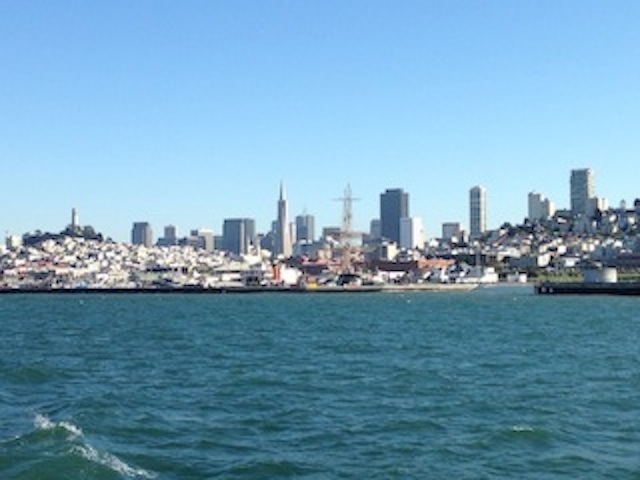
A road trip from Southern California to San Francisco blows up the conservative myth that “government is bad for business” from Mile 1. First, you’ll likely drive up Interstate 5. That’s one of the highways largely built with taxpayer funds as part of the Interstate Highway System. I-5 runs through California’s Central Valley, where a big portion of America’s fruits and vegetables are grown, and it’s not unusual to see agricultural trucks making up 50 percent or more of the road traffic. Those truckers, growers, store owners and consumers throughout the U.S. depend on I-5 and other federal and state highways to move commerce to market efficiently.
Coming into San Francisco, you will likely need to drive over one of the Bay Area’s grand bridges, such as the Golden Gate Bridge or the San Francisco-Oakland Bay Bridge. Both of these bridges were built with government support (for example, the land on either side of the Golden Gate Bridge was federally owned) and, particularly in the case of the Bay Bridge, government funding. The Golden Gate Bridge (which has a $6 round trip toll for automobiles and motorcycles) is an example of a project backed by federal, state and local governments that has a commercial purpose (e.g., commuters take the bridge between San Francisco and Marin County), and is also one of America’s top tourist draws, which greatly benefits the local economy.
Indeed, some of the most famous tourist sites in and around San Francisco Bay are part of the Golden Gate National Recreation Area, which is operated by the National Parks Service. These areas include Alcatraz Island, The Presidio, Marin Headlands, Muir Woods National Monument, China Beach, Fort Mason and more. As of 2008, this area was the 7th most visited tourist destination in the U.S.
As if tourism dollars pumped into San Francisco’s economy weren’t enough, BusinessWeek in 2012 named San Francisco America’s Best City. The rankings included many categories and factors (libraries, museums, public school performance, park acres, crime, income, unemployment, air quality, etc.) where good government involvement is key. One of those areas is the Bay Area Rapid Transit, or BART, the San Francisco area’s modern transit system which includes massive public works projects such as the 3.8 mile “Transbay Tube” for trains.
In short, getting to, getting around, visiting, working and conducting business in San Francisco would not be possible on its current successful scale without healthy interactions between business and government involving transportation, infrastructure, tourism and more. That’s true for much of the rest of the U.S. as well.


